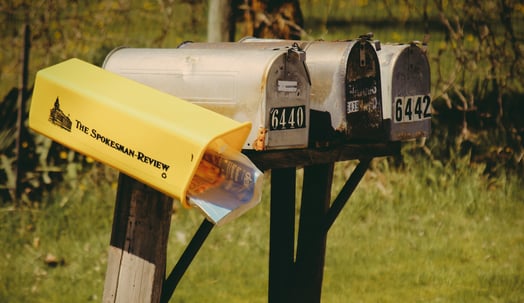I have high hopes that 2020 will be the year of selfless email marketing. A year in which we set aside our selfish motives spurred by personal gain, and really put our consumers’ needs and interests at the forefront of email marketing strategy. A femme can dream!

We all know by now that cold, outbound-y outreach is not the way to go. Especially not with marketing email. There’s no place for it in the inbound methodology, but so many of us are stuck in these frigid routines — blasting as many people as possible with messages about the latest and greatest at our companies. Where’s the love for the consumer with this approach? This also doesn’t exactly go over well with people just beginning to establish trust with your brand.
Access the Inbound Certification Course in Your HubSpot Account
Consider this: you plus millions of others are vying for consumers’ attention every day, trying to get a spot in their primary email inbox. That’s definitely an uphill battle. But it’s also important to consider what happens when you send marketing email to people who have not established any connection with your brand — they are not expecting to receive your promotional content in their inbox.
When you do this, you put your brand’s sender reputation on the line, destroy trust with consumers before you’ve even earned it, and risk not being able to reach the inbox of recipients who are actually excited to learn about your offerings.
Let’s look at a play-by-play of how selfish email marketing pans out:
- You’ve spent precious time and resources building a contact list from various sources, e.g, in-person meetings, networking opportunities, industry events, social media connections, or plain ol’ cold outreach.
- You’ve spent additional time drafting a stellar marketing email campaign in HubSpot to introduce your brand and inform recipients about what your brand has to offer.
- The email is delivered successfully, at first, and receives some opens before the spam complaints, unsubscribes, and bounces start to occur.
- After several campaigns to your full, unsegmented, cold email list, you notice that open rates have declined.
- You’re now confused, possibly upset and despondent, that your emails are not performing well. You’re also getting some heat from your team to get more successful emails out there.
- Return on investment (ROI) for your marketing email campaigns suffers and you can’t figure out what went wrong or how to recover.
It all begins with the contact list. Negative engagements such as spam complaints and unsubscribes are clear indicators that recipients are not expecting to hear from your brand. These engagements also train mailbox providers (like Google and Outlook), that marketing emails from your brand domain are generally unwanted and have no place in the primary inbox.
The result? Your marketing email is routed directly to the spam folder where recipients can’t even see it to engage with it. This is a vicious cycle that is only perpetuated by continually emailing contacts that have not given their email addresses themselves, explicit opt-in for marketing email, or are generally unengaged with your offerings.
The spam folder is a hard place to be and earning back the trust of mailbox providers is not easy. So the best way to avoid this whole debacle is to adopt the inbound methodology into your email marketing strategy and send only to the folks with whom you have an established relationship and consent to email. And stop sending cold emails via marketing email tools. That’s so 2019!
So here's to being a little less selfish — and way more selfless — with our email marketing campaigns in 2020. You can’t afford not to.
Want to connect with others on HubSpot tips, tricks, and updates? Head over to the HubSpot Community to join a conversation or start one of your own.






